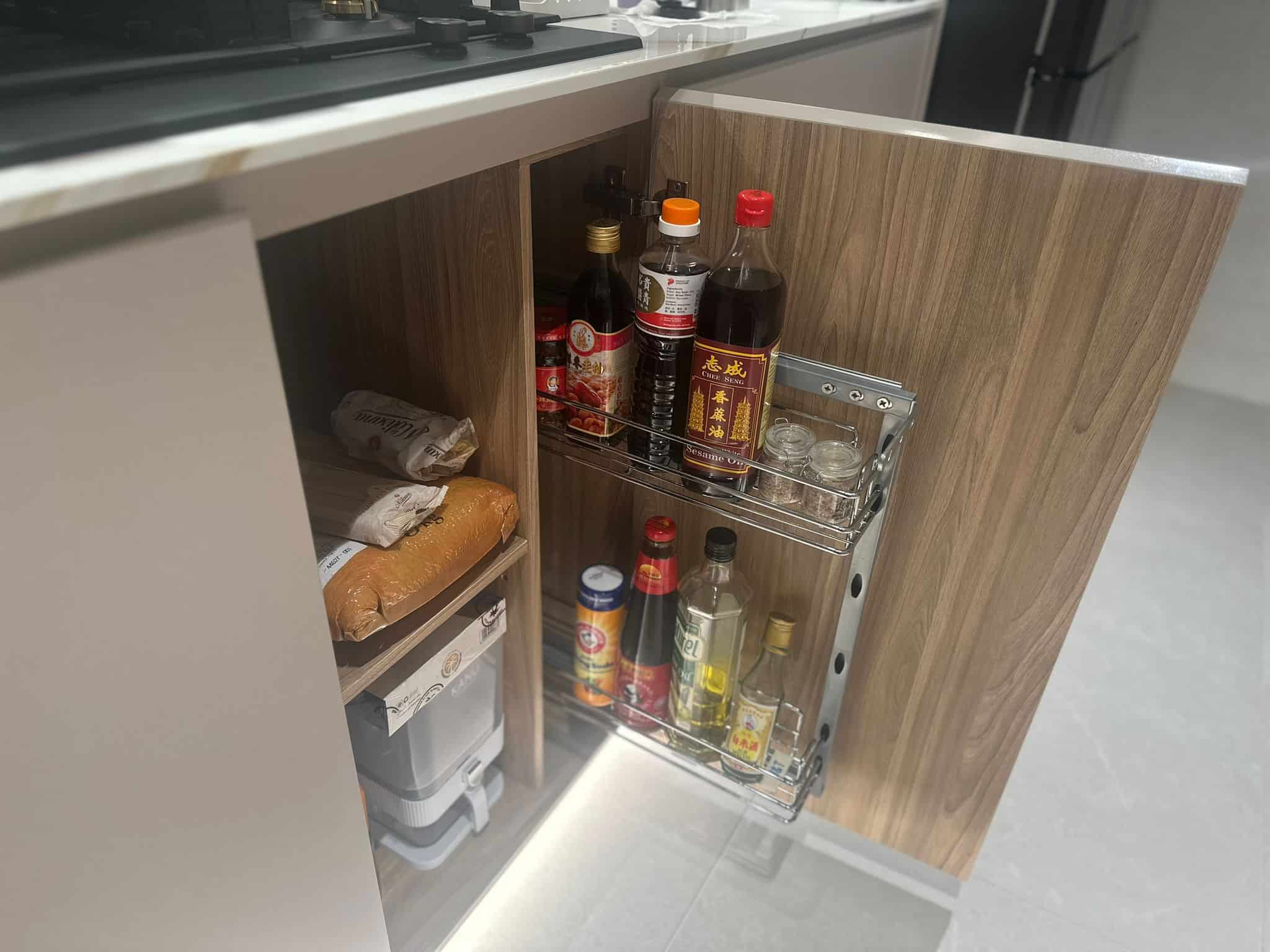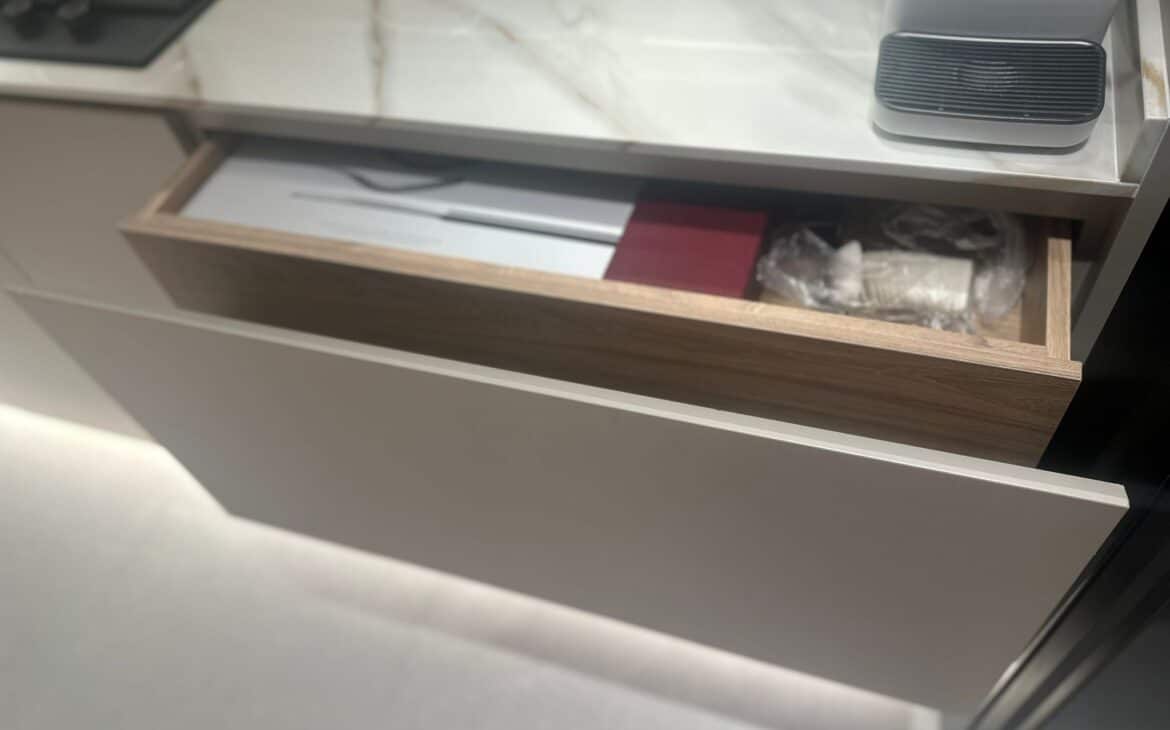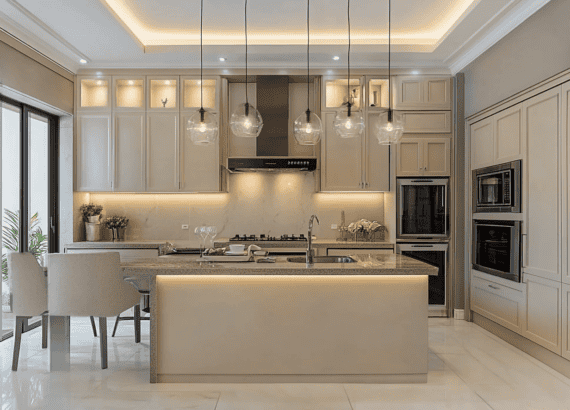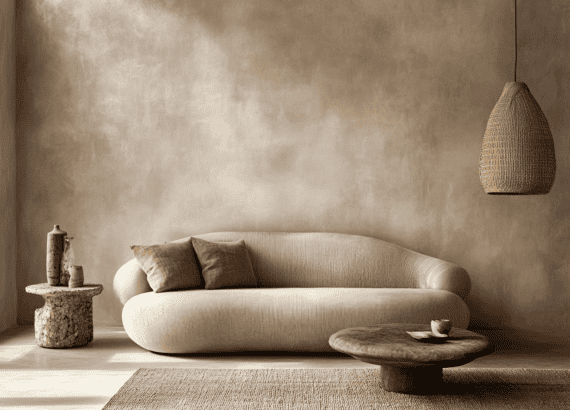Five Steps to an Ideal Kitchen Cabinet Design

The kitchen is often called the heart of the home, especially in Singapore, where it serves as the hub for family meals, festive gatherings, and quick bites before a busy day. For many Singaporeans living in HDB apartments, the kitchen must strike a delicate balance between aesthetics and functionality.
How Can You Optimize a Kitchen Cabinet Design?
A well-thought-out kitchen cabinet design can make all the difference, ensuring your kitchen doesn’t just look good but also works like a dream. Here are five essential steps to help you create the perfect cabinet design for your kitchen.
1. Cabinet Dimensions: Get the Basics Right
Once you’ve nailed down your kitchen layout, it’s time to focus on cabinet dimensions. These dimensions are the foundation of your kitchen cabinet design and can significantly impact the functionality of your space.
- Lower cabinets: Aim for a height of about 90cm and a depth of around 60cm to provide comfortable working space.
- Upper cabinets: Place them approximately 90cm from the ceiling, with a depth of 35cm for easy access.
To avoid mishaps in a busy kitchen, ensure cabinet doors and drawers open without clashing. This is especially important in compact HDB kitchens, where every square inch counts. Nobody wants to play bump into their cabinet doors while whipping up a quick meal!
2. Workflow While Cooking: Prioritize Functionality
Efficient workflow is the secret sauce to a well-designed kitchen. Enter the kitchen triangle, which ensures a seamless flow between your fridge, sink, and stove. Your cabinet layout should complement this triangle to keep everything within arm’s reach.
- Place sauce pull-out drawers near the stove for easy access while cooking.
- Use waterproof laminates for cabinets under the sink to prevent water damage.
- Ensure cabinets around the fridge are designed to store bulky or frequently used items.
By tailoring your kitchen cabinet design to your cooking routine, you’ll save time and effort while making meal prep a breeze.

3. Types of Cabinets and Drawers: Choose Wisely
The right mix of cabinets and drawers can transform your kitchen into an organized haven. Different cabinet types serve different purposes, and choosing the right ones can enhance both functionality and aesthetics.
- Drawers: Ideal for cutlery, cups, plates, and pots. They’re perfect for items you need quick access to.
- Swing doors: Best for upper cabinets to store less frequently used items.
- Specialty designs: Consider sauce pull-out drawers, hidden drawers, toe-kick drawers or glass display cabinets for added functionality and style.
For drying areas, dryer racks like below can make life easier while maintaining the sleek look of your kitchen.


4. Aesthetics and Interior Design: Blend It All Together
Your kitchen cabinet design should not only be functional but also align with the overall interior design of your home. Think about how your cabinets will look alongside your countertops, backsplash, and appliances.
- Colour palette: Opt for neutral tones for a timeless look or bold hues for a modern touch.
- Materials and laminates: Explore wood veneers, high-gloss laminates, or matte finishes to suit your style.
- Details: Rounded edges, curves, and unique hardware can add character while softening the space.
Whether you’re going for a Japandi vibe, minimalist, or modern luxury, your cabinets should enhance the theme seamlessly.
5. Consider Your Other Needs: Go Beyond the Basics
Lastly, think about additional features you might want in your kitchen. A well-designed kitchen cabinet layout can incorporate these elements without compromising on space or functionality.
- Wine holders: Perfect for wine enthusiasts who want to showcase their collection.
- Built-in oven: A must-have for avid bakers.
- Pantry area: Great for storing non-perishables and snacks.
Tailor your cabinet design to your lifestyle and hobbies to create a kitchen that’s truly yours.
Conclusion
Designing your kitchen cabinets is no small feat, but with these five steps, you’ll be well on your way to creating a space that’s functional, stylish, and uniquely yours. Remember to consider dimensions, workflow, cabinet types, aesthetics, and your individual needs to achieve the perfect kitchen cabinet design.
Good luck with your kitchen cabinet design adventures, and may your dream kitchen become a reality!
Before I go, I would like to introduce myself. I’m Casey! I’ve always had a passion for interior styling. Hence the reason for creating this blog. You can learn more about me here! Till next time.





